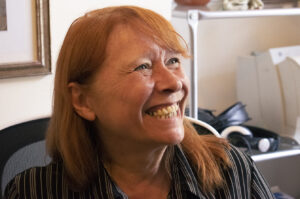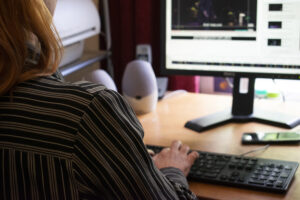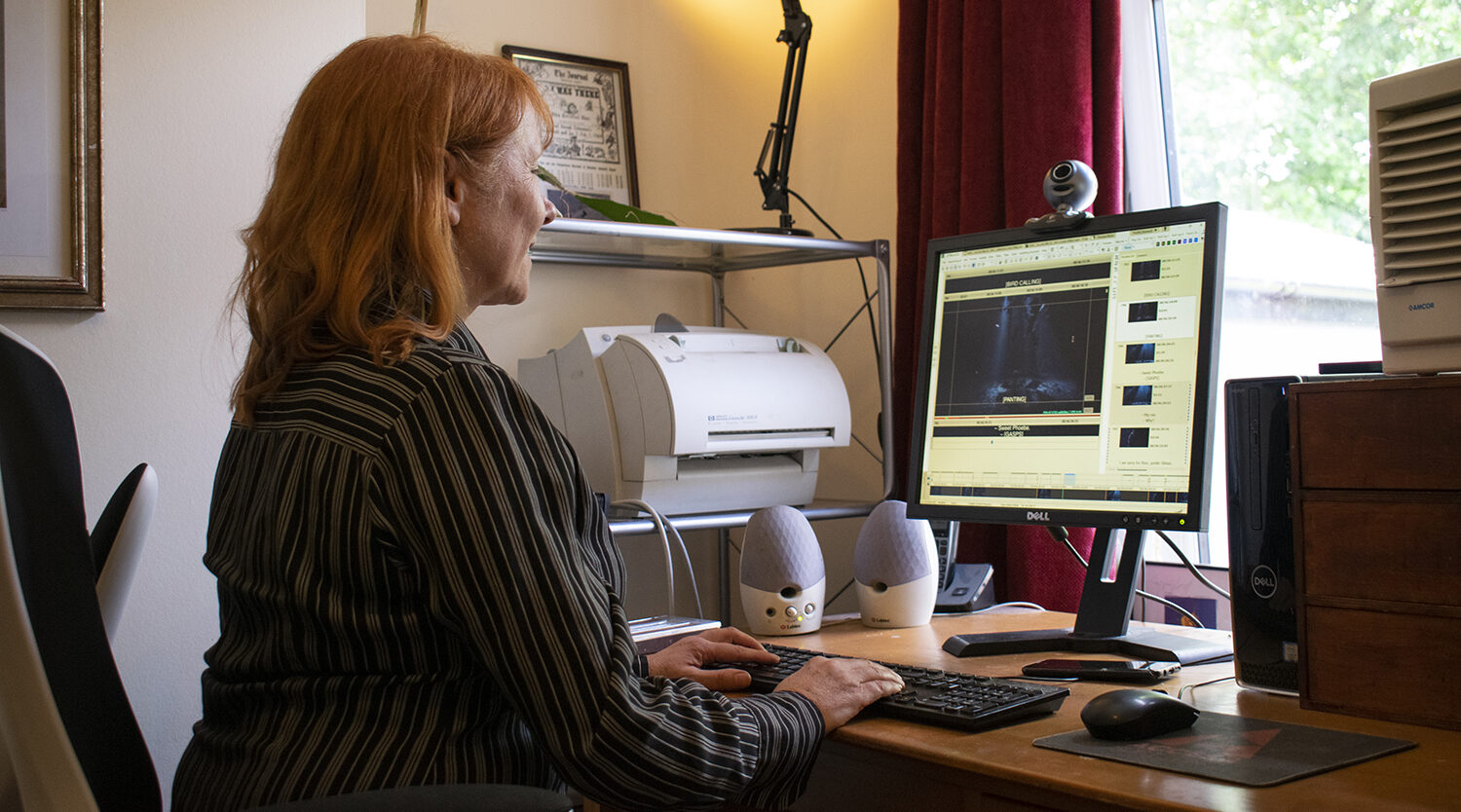An Interview with Digital Subtitler, Fran Welland
Sitting down with Fran in her home office, it’s wonderful to imagine the full scope of work she’s had displayed on her computer.
You may have seen her subtitles on trailers for the latest theatre production or on any of the full-length shows released by The National Theatre or Soho On Demand.
Though the scope of these videos can change drastically, it’s her focus on making the online arts landscape a more accessible place, that has given Stagetext such a strong relationship with her.

“A lot of digital subtitlers, myself included, started out working for the BBC, though it was very different subtitling for television. The BBC were very strict about the timings of subtitles, as each line of text could only stay on screen for a set amount of times, they also used colours for subtitles very differently and they would even edit and omit words to fit their own timings and line lengths.
“How I do it today is very different. Firstly, access is always at the forefront of my subtitles, they are always verbatim, I also make sure the timings flow in sync with the video and at a pace comfortable for the reader.”
Fran quickly runs though some the technical aspects of the job, explaining how once a job comes in from Stagetext, she’ll download and import her videos into her EZTitles subtitling software, which can detect the audio track and some of the language, as well as detecting different scenes and breaks in the video, which helps with timings.
It’s from there that Fran gets to work typing out exactly what is being said, and this is where she brings a lot of art to it and shows how evident it is that access must come first.
“It can take some time going through the complete audio but there are lots of shortcuts and gizmos that my software has that speeds up the process. It will display the audio as soundwaves to help me match the words up with those speaking on screen and the time stamps for different scenes helps me work in manageable segments.
“Though, creating subtitles for the spoken words is still all me. A.I. and speech recognition software has come a long way, but I still find it easier and more accurate to type it out myself. It’s things like accents, names, and even punctuation that A.I. struggles with and it doesn’t recognise any of the music cues or sound effects either.”

Making truly accessible subtitles means more than just transcribing the words on their own, there’s a real art to access. Fran focuses on the colour, the font, how long the lines of the subtitles are, and how subtitles contrast with the images and graphics on screen.
“One of my pet peeves is when logos, names, and graphics appear at the bottom of the screen and get in the way. I always encourage people to keep a ‘subtitle safe zone’ so nothing gets in the way of the words, as having to move subtitles around the screen to avoid graphics can make it really tiring for the viewer to follow.
“Most other things I can control, I always use colours and fonts that are RNIB approved, I break the lines so there’s a natural flow to the subtitles, which makes them really easy to read, and I can change these depending on which platform I’m outputting to or I can match any house-style a client may require.
“Even controlling the timing of the subtitles can be tricky and requires extra attention. This is especially important for comedy, as I never want to rush ahead and ruin a punchline, but I need to be sure that anyone using the subtitles will be laughing along with those who don’t.”
Though it’s more than just the words being said that Fran needs to focus on, as all the sound effects and music cues also need their own subtitles to make her work fully accessible. It’s with these additional sounds where Fran really puts her mind to work.
“Sometimes it can be really tricky, for example, during a particularly tense scene in a horror production when the music swells, would I use a descriptive subtitle such as “ominous music” or go into a bit more detail such as “melancholic strings”, or do I need to give the title of the piece of music being played? There’s a lot of options to go through every time.
“The sound effects themselves can be a little more straightforward as some of these can be very self-explanatory and using subtitles like ‘whistles’ or ‘crashes’ may be all that’s needed. However, these sounds may be intertwined with the spoken word or may obscure the audio all together, which means I need to be really careful how they’re timed and displayed within the subtitles, so I can give the audience an accurate experience.
“I find the best way to ensure all these sound effects and the subtitles will work is to play the whole thing through on mute. Subtitles should act as a visual soundtrack for the video, so if I can completely follow what’s going on without any volume then I’ve done my job.”
Spending time with Fran is really eye opening, the amount of thought, care, and attention that does into every line is simply impressive.
Subtitles are more than just words, they’re an experience, and Fran is pivotal in making that experience an enjoyable, and most importantly, accessible one, for all subtitle users.
Take a look at all the digitally subtitled productions we have to offer on our What’s On page.




